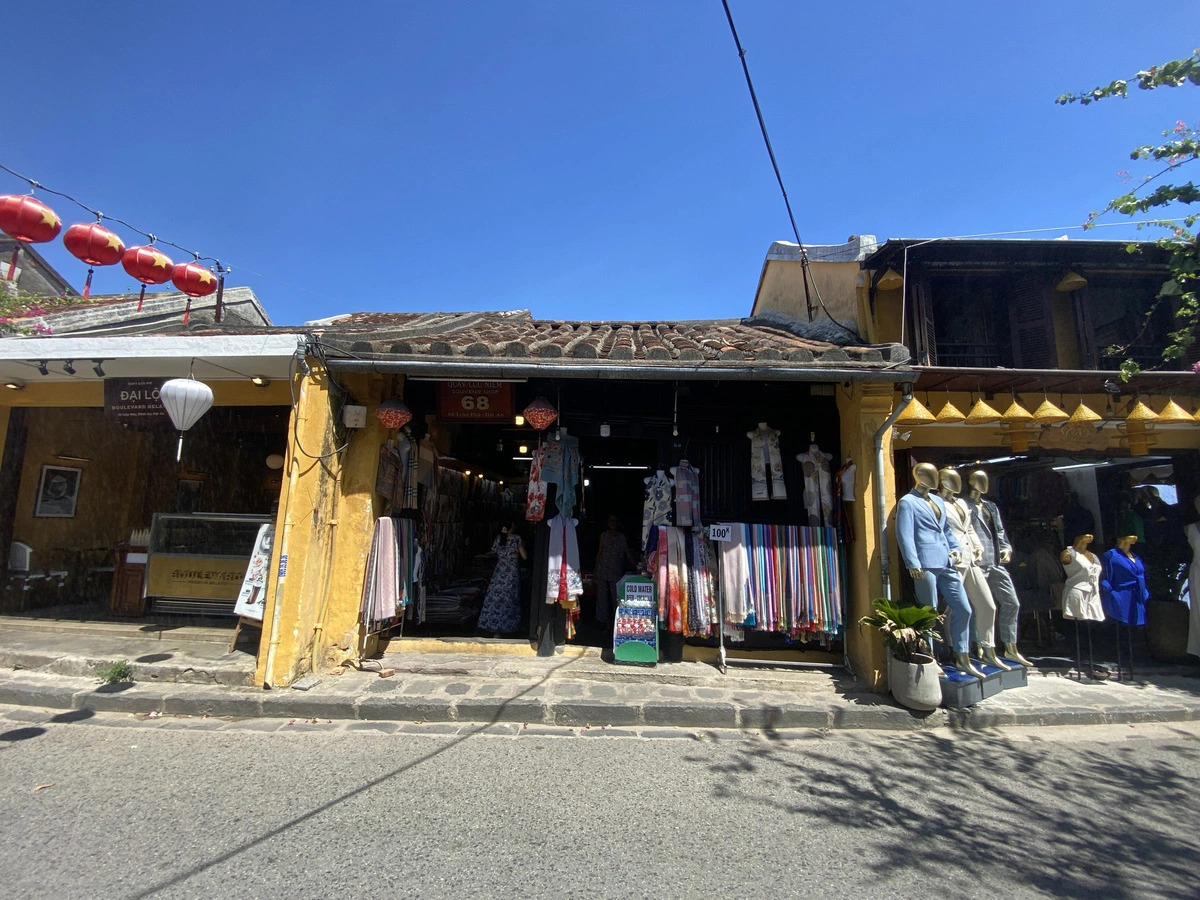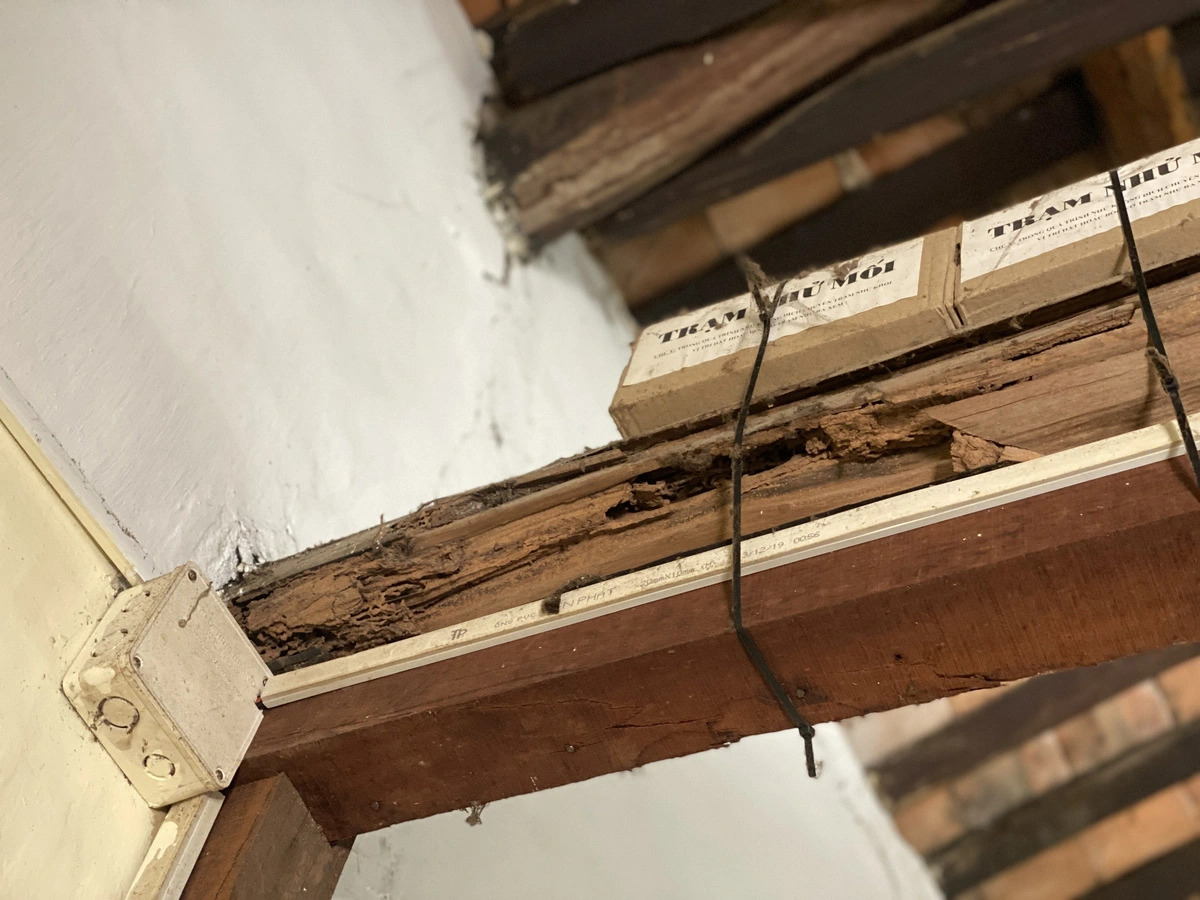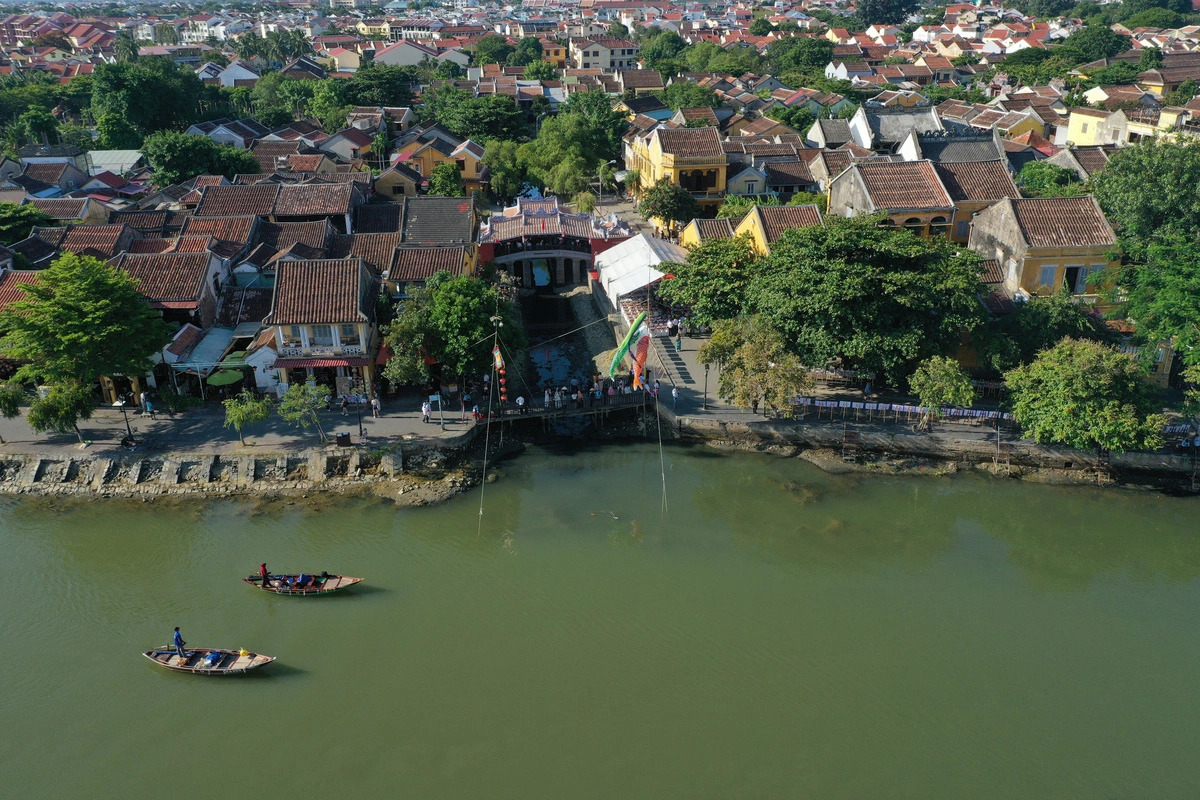Aging heritage houses in Hoi An Ancient Town in Quang Nam Province, central Vietnam, are falling into disrepair, trapped in legal limbo as ownership disputes and funding shortfalls hinder urgent restoration efforts.
The iconic town, a UNESCO-recognized trading port from the 15th to the 19th centuries, is grappling with mounting challenges in preserving its historical treasures.
Currently, 11 privately owned heritage sites in Hoi An require immediate restoration.
Among them is a house at 68 Tran Phu Street, where an unassuming moss-covered facade conceals a crumbling interior of decayed beams and walls.
The nearly 400-square-meter house is home to three elderly women, the youngest of whom, 83-year-old Ngo Thi Gan, said the property has been passed down through generations.
The house’s current legal owner is a Dutch national, complicating restoration efforts.
 |
| The exterior of 68 Tran Phu Street in Hoi An Ancient Town, Quang Nam Province, central Vietnam, appears intact, but the interior is almost entirely damaged. Photo: Thai Ba Dung / Tuoi Tre |
Despite its prime location and estimated value of billions of Vietnam dong, the structure is beyond repair and slated for demolition, and authorities have been unable to proceed due to the legal owner’s absence.
Residents have been evacuated during severe storms, like recent Typhoon Tra Mi, to ensure their safety.
Another property at 76/18 Tran Phu Street, spanning thousands of square meters, houses three families of the same clan.
Years of battling decay and termites have left one of its three houses unsalvageable, but restoration is stalled due to the need for a legal representative.
Other historic sites on Tran Phu Street, Le Loi, Bach Dang, and the Ngu Bang Assembly Hall face similar predicaments.
Nguyen Van Son, the Hoi An People’s Committee chairman, emphasized that restoration and resident safety are priorities, but unresolved ownership issues and financial barriers complicate efforts.
“It’s a perplexing reality. Even with funding, we cannot restore these ancient houses,” Son said, explaining that many properties, some over a century old, have changed hands multiple times, leaving their legal documentation incomplete or unclear.
 |
| Structural components of 76/18 Tran Phu Street in Hoi An Ancient Town, Quang Nam Province, central Vietnam, have been hollowed out by termites. Photo: Thai Ba Dung / Tuoi Tre |
“Although these buildings are severely damaged, there’s little we can do,” Son added.
While the national government fully funds the restoration of state-owned heritage sites, it only covers 45 to 75 percent of the costs for privately owned properties.
Most families cannot afford the remaining expenses.
Residents such as Luong Thi Huyen Trang at 76/18 Tran Phu and Ngo Thi Gan’s family at 68 Tran Phu told Tuoi Tre (Youth) newspaper that their incomes barely cover daily necessities, leaving no funds for restoration.
Despite some sites receiving special support from the government, unresolved legal issues have kept restoration efforts at a standstill.
Eleven privately owned heritage sites in Hoi An remain at risk of collapse, posing dangers to residents and the town’s historical legacy.
Until solutions are found, authorities can only prepare to evacuate occupants during severe weather.
Like us on Facebook or follow us on Twitter to get the latest news about Vietnam!


















































